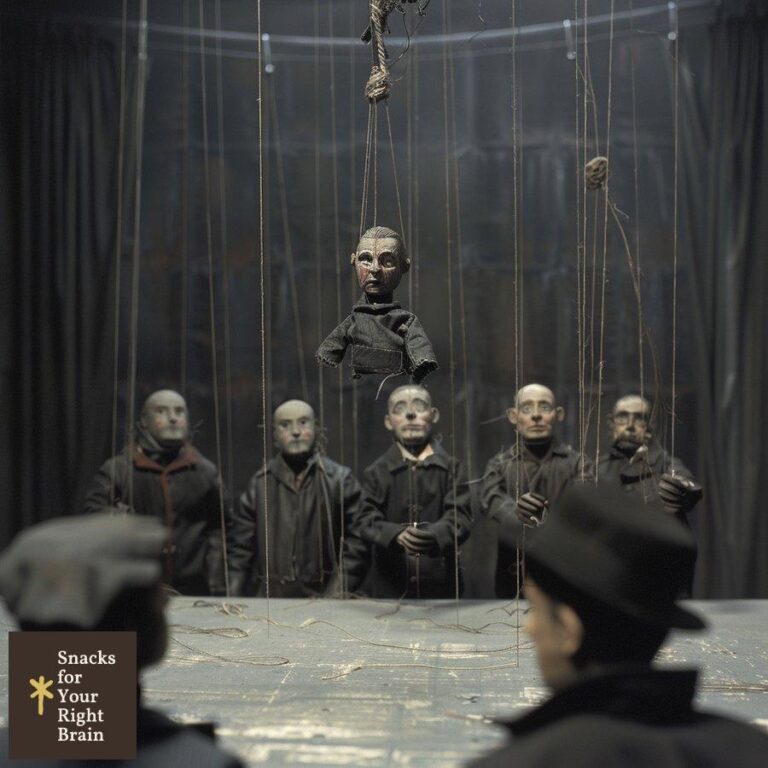What Is Third-Person Objective Point of View in a Short Story
What is third-person objective point of view?
Third-person objective point of view (POV) is a narrative technique in which the story is told by an unseen, unheard narrator who reports the facts of the story without revealing the thoughts, feelings, or opinions of any of the characters. The narrator functions as an impartial observer, providing a detached, factual account of the events and dialogue in the story.
In third-person objective POV, the narrator does not have access to the inner lives of the characters. The reader only knows what the characters say and do, not what they are thinking or feeling. The narrator does not make judgments or offer interpretations of the characters’ behaviors or motivations. Instead, the narrator presents the story in a neutral, documentary style, allowing the reader to draw their own conclusions about the characters and events.

Third-person objective POV is often compared to a camera that simply records the action without any commentary or editorializing. The narrator is like a fly on the wall, observing the characters from a distance and reporting their actions and dialogue verbatim. This POV creates a sense of objectivity and realism, as if the reader is witnessing the events of the story firsthand.
How does third-person objective differ from other POVs?

Third-person objective POV differs from other narrative points of view in several key ways:

-
Access to characters’ thoughts and feelings: In third-person objective, the narrator does not have access to the characters’ inner lives and cannot reveal their thoughts, feelings, or opinions. In contrast, third-person limited POV allows the narrator to access the thoughts and feelings of a single character, while third-person omniscient POV gives the narrator access to the thoughts and feelings of multiple characters.
-
Narrator’s role: In third-person objective, the narrator functions as an impartial observer, reporting the facts of the story without making judgments or offering interpretations. In third-person limited and omniscient POVs, the narrator may offer commentary, analysis, or opinions on the characters and events.
-
Emotional distance: Third-person objective POV creates a sense of emotional distance between the reader and the characters, as the reader cannot directly access the characters’ inner experiences. This distance can make the characters seem more mysterious or enigmatic. In contrast, third-person limited and omniscient POVs allow for a closer emotional connection between the reader and the characters.
-
Narrative style: Third-person objective POV is characterized by a detached, factual narrative style that focuses on the characters’ actions and dialogue. In third-person limited and omniscient POVs, the narrative style may be more subjective and reflect the narrator’s personality or biases.
What are the key narrative techniques in third-person objective?
Several key narrative techniques are commonly used in third-person objective POV:
-
Show, don’t tell: Since the narrator cannot reveal the characters’ thoughts and feelings directly, writers using third-person objective POV must “show” the characters’ emotions through their actions, dialogue, and body language rather than “telling” the reader what the characters are thinking or feeling.

-
Dialogue: Dialogue is a crucial tool in third-person objective POV, as it allows the writer to reveal the characters’ personalities, relationships, and motivations through their speech. The narrator cannot interpret or analyze the dialogue, so the writer must craft the dialogue to be revealing and meaningful on its own.
-
Precise description: Because the narrator cannot provide insight into the characters’ inner experiences, writers using third-person objective POV must rely on precise, vivid description to convey the characters’ appearances, movements, and environments. The description must be objective and factual, without any subjective commentary or interpretation.
-
Symbolism and metaphor: Writers using third-person objective POV may use symbolism and metaphor to suggest the characters’ inner lives and the themes of the story without directly stating them. The narrator cannot explain the meaning of the symbols or metaphors, so the writer must choose them carefully to resonate with the reader on a subconscious level.
-
Ambiguity and mystery: Third-person objective POV can create a sense of ambiguity and mystery around the characters and their motivations, as the reader cannot access the characters’ thoughts and feelings directly. Writers may use this ambiguity to create tension and keep the reader engaged in the story.
Why do authors choose third-person objective POV?
Authors may choose to use third-person objective POV for several reasons:
-
To create a sense of realism and objectivity: By presenting the story in a detached, factual manner without any subjective commentary or interpretation, third-person objective POV can create a sense of realism and objectivity that draws the reader into the story.
-
To maintain suspense and mystery: The emotional distance created by third-person objective POV can help maintain suspense and mystery in the story, as the reader is kept guessing about the characters’ thoughts, feelings, and motivations.
-
To avoid bias or judgment: By presenting the story from an impartial, objective point of view, writers using third-person objective POV can avoid the appearance of bias or judgment towards the characters and their actions. This POV allows the reader to draw their own conclusions about the characters and events.
-
To focus on the characters’ actions and dialogue: Third-person objective POV encourages writers to focus on the characters’ actions and dialogue as the primary means of revealing their personalities and motivations. This emphasis on showing rather than telling can create a more engaging and immersive reading experience.
-
To explore themes and ideas: By presenting the story in a detached, objective manner, third-person objective POV can allow writers to explore themes and ideas without the distraction of subjective commentary or interpretation. The reader is left to draw their own conclusions about the meaning and significance of the story.
What challenges does third-person objective present?

Using third-person objective POV presents several challenges for writers:
-
Revealing character motivation: Since the narrator cannot directly reveal the characters’ thoughts and feelings, writers must find other ways to convey the characters’ motivations and inner lives. This can be challenging, as the writer must rely on the characters’ actions, dialogue, and body language to suggest their motivations without stating them explicitly.
-
Maintaining reader engagement: The emotional distance created by third-person objective POV can make it challenging to maintain reader engagement, as the reader may feel disconnected from the characters and their experiences. Writers must find other ways to keep the reader invested in the story, such as through suspense, mystery, or the exploration of themes and ideas.
-
Avoiding ambiguity and confusion: While a certain degree of ambiguity and mystery can be engaging, writers using third-person objective POV must be careful not to create too much ambiguity or confusion for the reader. The writer must provide enough context and detail to allow the reader to follow the story and understand the characters’ actions and motivations, even if they cannot access the characters’ thoughts and feelings directly.
-
Crafting effective dialogue: Dialogue is a crucial tool in third-person objective POV, but writers must be careful to craft dialogue that is revealing and meaningful on its own, without any subjective commentary or interpretation from the narrator. The dialogue must convey the characters’ personalities, relationships, and motivations without the writer’s intervention.
-
Avoiding clichés and stereotypes: Without access to the characters’ inner lives, writers using third-person objective POV may be tempted to rely on clichés or stereotypes to convey the characters’ personalities and motivations. Writers must be careful to create complex, multidimensional characters that resist simplistic categorization.
How can writers effectively implement third-person objective in short stories?
Writers can implement third-person objective POV effectively in short stories by following these strategies:

-
Establish the narrator’s voice: Writers should establish a clear, consistent narrative voice that maintains the objective, detached tone of third-person objective POV throughout the story. The narrator’s voice should be neutral and impartial, avoiding any subjective commentary or interpretation.
-
Use precise, vivid description: Writers should use precise, vivid description to convey the characters’ appearances, movements, and environments in an objective, factual manner. The description should focus on the characters’ observable behaviors and physical characteristics rather than their inner experiences.
-
Craft revealing dialogue: Writers should craft dialogue that is revealing and meaningful on its own, without any subjective commentary or interpretation from the narrator. The dialogue should convey the characters’ personalities, relationships, and motivations through their speech.
-
Employ symbolism and metaphor judiciously: Writers may use symbolism and metaphor to suggest the characters’ inner lives and the themes of the story, but they should do so judiciously and with a light touch. The symbols and metaphors should resonate with the reader on a subconscious level without being overly obvious or heavy-handed.
-
Maintain suspense and mystery: Writers should maintain suspense and mystery in the story by withholding information about the characters’ thoughts and feelings. The writer should create a sense of ambiguity and uncertainty around the characters’ motivations and actions, keeping the reader engaged and guessing.
-
Avoid clichés and stereotypes: Writers should avoid relying on clichés or stereotypes to convey the characters’ personalities and motivations. Instead, they should create complex, multidimensional characters that resist simplistic categorization.
-
Show, don’t tell: Writers should show the characters’ emotions through their actions, dialogue, and body language rather than telling the reader what the characters are thinking or feeling. This “show, don’t tell” approach is crucial in third-person objective POV.
Which famous short stories use third-person objective POV?

Many famous short stories have been written using third-person objective POV, including:
-
“Hills Like White Elephants” by Ernest Hemingway: This story uses third-person objective POV to present a conversation between a man and a woman waiting for a train, without revealing their thoughts or feelings. The story explores themes of communication, relationships, and personal choice.
-
“The Lottery” by Shirley Jackson: This story uses third-person objective POV to describe the annual lottery drawing in a small town, without revealing the thoughts or feelings of the townspeople. The story explores themes of tradition, conformity, and the darker aspects of human nature.
-
“The Necklace” by Guy de Maupassant: This story uses third-person objective POV to describe the life of Mathilde Loisel, a woman who borrows a necklace for a party and loses it, without revealing her thoughts or feelings. The story explores themes of vanity, social class, and the consequences of deception.
-
“The Killers” by Ernest Hemingway: This story uses third-person objective POV to describe the arrival of two mysterious men in a small town, without revealing their thoughts or feelings. The story explores themes of fate, violence, and the nature of evil.
-
“The Swimmer” by John Cheever: This story uses third-person objective POV to describe the journey of Neddy Merrill, a man who decides to swim home through a series of neighborhood pools, without revealing his thoughts or feelings. The story explores themes of time, memory, and the illusion of progress.
How does third-person objective impact character development?
Third-person objective POV can impact character development in several ways:

-
Limitations on revealing inner lives: Since the narrator cannot directly reveal the characters’ thoughts, feelings, and motivations, writers must find other ways to convey the characters’ inner lives. This can lead to more subtle and nuanced character development, as the writer must rely on the characters’ actions, dialogue, and body language to suggest their personalities and motivations.
-
Focus on observable behaviors: In third-person objective POV, the writer must focus on the characters’ observable behaviors and physical characteristics rather than their inner experiences. This can lead to a more detailed and precise description of the characters’ appearances, movements, and interactions with others.
-
Ambiguity and mystery: The emotional distance created by third-person objective POV can lead to a sense of ambiguity and mystery around the characters’ motivations and inner lives. This ambiguity can make the characters seem more complex and multidimensional, as the reader is left to draw their own conclusions about the characters based on their limited information.
-
Emphasis on dialogue: Since the narrator cannot directly reveal the characters’ thoughts and feelings, dialogue becomes a crucial tool for character development in third-person objective POV. Writers must craft dialogue that is revealing and meaningful on its own, without any subjective commentary or interpretation from the narrator.
-
Avoidance of stereotypes: The limitations of third-person objective POV can encourage writers to create complex, multidimensional characters that resist simplistic categorization. Writers must avoid relying on clichés or stereotypes to convey the characters’ personalities and motivations, which can lead to more nuanced and realistic character development.
When is third-person objective most suitable for a story?
Third-person objective POV is most suitable for stories that aim to:
-
Create a sense of realism and objectivity: Stories that seek to present a detached, factual account of events and characters may benefit from third-person objective POV, as it can create a sense of realism and objectivity that draws the reader into the story.
-
Maintain suspense and mystery: Stories that rely on suspense, mystery, and ambiguity to engage the reader may be well-suited to third-person objective POV, as the emotional distance created by this POV can heighten the sense of uncertainty and intrigue.
-
Explore themes and ideas: Stories that focus on exploring themes and ideas rather than character development may be well-suited to third-person objective POV, as it allows the writer to present the story in a detached, objective manner without the distraction of subjective commentary or interpretation.
-
Avoid bias or judgment: Stories that seek to avoid the appearance of bias or judgment towards the characters and their actions may benefit from third-person objective POV, as it allows the writer to present the story from an impartial, objective point of view.
-
Focus on dialogue and action: Stories that prioritize dialogue and action over inner monologue and introspection may be well-suited to third-person objective POV, as it encourages the writer to convey the characters’ personalities and motivations through their speech and behavior rather than their thoughts and feelings.
How does third-person objective affect reader engagement?
Third-person objective POV can affect reader engagement in several ways:
-
Emotional distance: The emotional distance created by third-person objective POV can make it challenging for some readers to connect with the characters and their experiences. Readers may feel disconnected from the characters’ inner lives and motivations, which can reduce their investment in the story.
-
Suspense and mystery: The ambiguity and mystery created by third-person objective POV can heighten the sense of suspense and intrigue for some readers. By withholding information about the characters’ thoughts and feelings, the writer can keep the reader engaged and guessing about the characters’ motivations and the outcome of the story.
-
Realism and objectivity: For readers who appreciate a detached, factual narrative style, third-person objective POV can create a sense of realism and objectivity that draws them into the story. The lack of subjective commentary or interpretation can make the story feel more authentic and immersive.
-
Exploration of themes: Readers who are interested in exploring themes and ideas may be drawn to stories that use third-person objective POV, as it allows them to engage with the story on a more abstract level without the distraction of character development or emotional involvement.
-
Dialogue and action: Readers who enjoy stories that prioritize dialogue and action over inner monologue and introspection may find third-person objective POV engaging, as it encourages the writer to convey the characters’ personalities and motivations through their speech and behavior rather than their thoughts and feelings.
Ultimately, the effect of third-person objective POV on reader engagement will depend on the individual reader’s preferences and the writer’s skill in crafting a compelling story within the limitations ofthe third-person objective POV.
Conclusion
Third-person objective point of view serves as a powerful narrative tool that allows writers to present their stories with a sense of realism and detachment. By focusing solely on observable actions and dialogue, this POV challenges writers to convey character depth and emotional complexity without direct access to characters’ inner thoughts.
The impact of third-person objective on character development, reader engagement, and thematic exploration is profound. It invites readers to draw their own conclusions about characters and events, fostering a unique interaction between the text and the audience.
As writers navigate the challenges of this narrative style, they can create compelling stories that resonate on multiple levels, engaging readers through suspense, ambiguity, and rich, vivid descriptions. Whether exploring the intricacies of human relationships or delving into broader themes of society and existence, third-person objective POV remains a valuable option for storytellers seeking to craft impactful narratives.
In summary, the third-person objective point of view is not just a stylistic choice; it shapes the very fabric of storytelling, influencing how stories are told and experienced. Writers who master this technique can unlock new dimensions of storytelling, creating works that are both engaging and thought-provoking.






